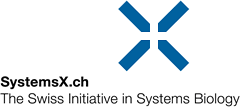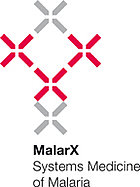MalarX
Systems Medicine of Malaria
Malaria is one of the most important infectious diseases worldwide, with more than 500 million new cases every year and an annual death rate of up to 2 million people, mostly children under the age of five. Malaria can be treated relatively easily if diagnosed in time, and eradication appears a possible scenario.
Some malaria parasite species develop dormant forms that can survive for many years in liver cells before they are activated and infect red blood cells. Thus, eradication is not possible without eliminating the dormant liver stage forms. Currently, only one drug, “Primaquine”, is available for radical elimination of liver stage parasites including the dormant stages. Unfortunately, Primaquine has many shortcomings, including the two-week daily administration regimen and severe side effects in people with G6PD deficiency, an inherited disease that is widespread in malaria-endemic countries.
Research on dormant liver stages is limited by the fact that activation can take many months or even years and thus cannot be studied in vitro. Although monkey models to study the dormant liver stage exist, in vivo experiments do not allow large-scale drug screening.
Overcoming the most important bottleneck
We suggest overcoming the problems associated with experimental approaches by applying mathematical modelling and systems engineering methods. Information from gene databases, as well as stage-specific transcriptomic and metabolomic data will guide the development of a mathematical model for the liver-stage metabolism. The metabolome provides the best readout for truly activated pathways in the parasite at a given stage in its life cycle, and our model, continuously fueled by data produced within the MalarX consortium, will generate hypotheses regarding new drug targets. These suggestions will be challenged by selected experiments that will ultimately lead to new drugs for malaria.
Support from all over the world
Malaria eradication is a huge problem worldwide and it was not difficult to convince partner organizations to support the MalarX consortium. Affiliated MalarX members come from Switzerland, the EU and from malaria endemic countries. Among them are academic institutions as well as industrial partners providing biological material, samples, drugs and information.
| Principal Investigator | Prof. Vassily Hatzimanikatis, Computational Systems Biotechnology, EPF Lausanne |
| Involved Institutions | University of Geneva, University of Bern |
| Number of Research Groups | 4 |
| Project Duration | Mar. 2014 – Feb. 2018 |
| Approved SystemsX.ch Funds | CHF 2.858 million |
Updated June 2014


